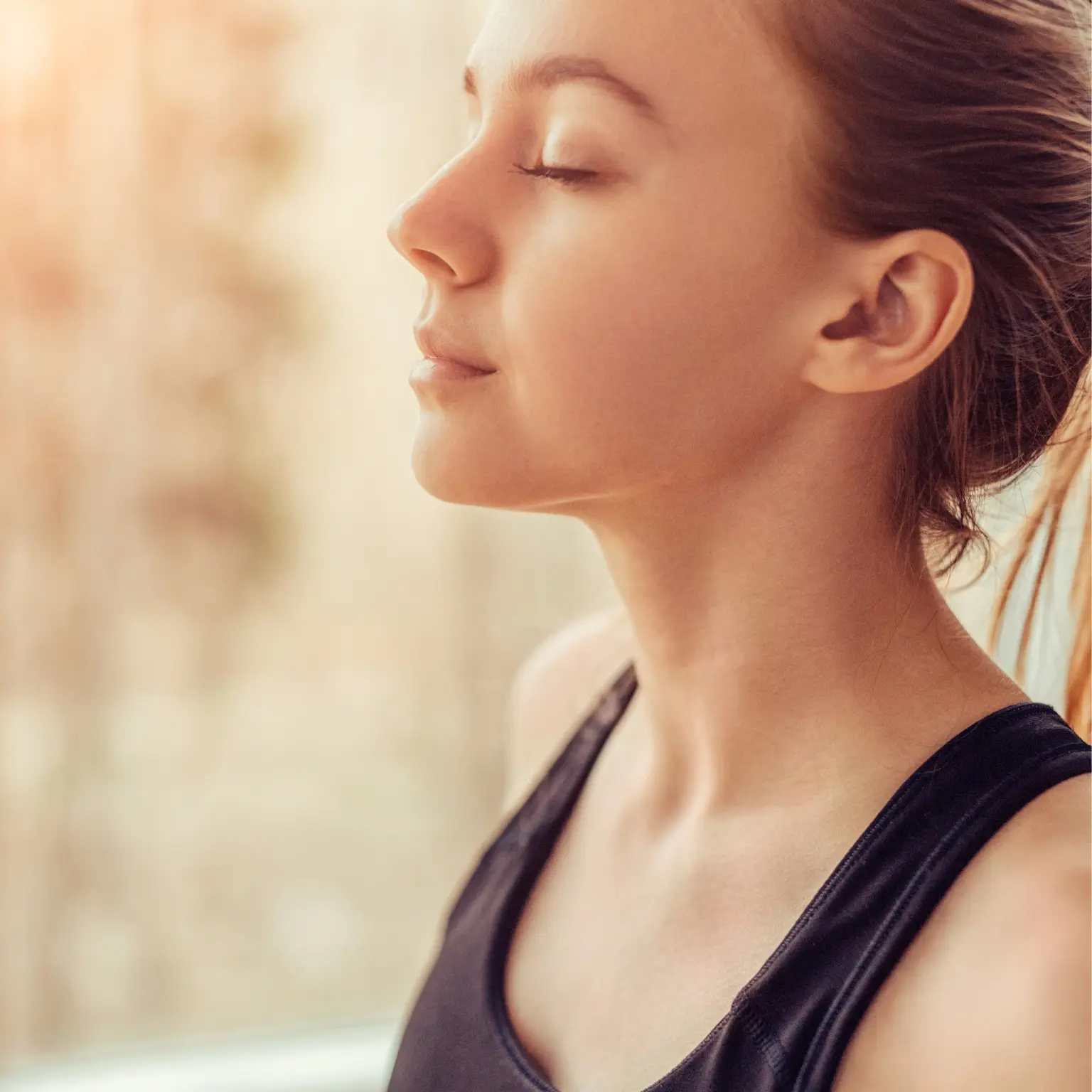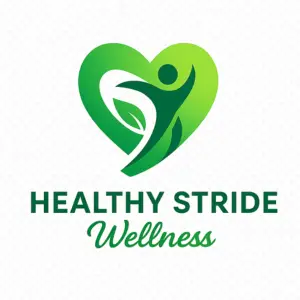5 Breathing Exercises to Calm Your Anxiety

Welcome to Healthy Stride Wellness! We’re excited to bring you this insightful blog on breathing exercises for anxiety. In today’s fast-paced world, anxiety can affect anyone, from working professionals to students, and even retirees.
The pressures of daily life, work, and personal responsibilities often lead to heightened levels of stress and anxiety. But the good news is that there are simple, effective tools to manage these feelings, one of the most accessible being breathing exercises.
Breathing exercises are not only a practical solution for anxiety but also a powerful way to improve your overall mental health and wellness. They are easy to incorporate into your daily routine, require no special equipment, and can be done anywhere, anytime.
Table of Contents
Key Takeaways
- Practicing deep breathing can be a great way to handle feelings of anxiety.
- These techniques can significantly reduce stress and enhance mental wellness.
- Consistency in practicing these exercises leads to long-term benefits for both mental and physical health.
Let’s dive into five essential breathing exercises that can help you regain control and calm your anxiety.
Deep Diaphragmatic Breathing
What is Diaphragmatic Breathing?
Deep diaphragmatic breathing, also known as belly breathing, is a fundamental technique that engages the diaphragm fully. Unlike shallow breathing, which can contribute to anxiety by limiting oxygen intake and increasing heart rate, diaphragmatic breathing allows for full oxygen exchange. This deeper breathing pattern stimulates the parasympathetic nervous system, which is responsible for the body’s ‘rest and digest’ response, helping to counteract the ‘fight or flight’ response associated with anxiety.
How to Practice It?
- Get into a cozy position, making sure your back is nice and straight.
- Place your hand on your chest and the other on your belly.
- Take a long breath through your nose, counting to four. Let your stomach expand while keeping your chest steady.
- Hold your breath for a count of two.
- Breathe out gently through your mouth, counting to six, and notice your belly moving in.
- Keep doing this for about 5 to 10 minutes, concentrating on the movement of your belly going up and down.
Benefits
| 1. Lowers Blood Pressure | Deep diaphragmatic breathing helps to dilate blood vessels, which improves circulation and lowers blood pressure. This makes it an effective method for stress management and heart health. |
| 2. Slows Heart Rate | By engaging in this breathing technique, you can slow down your heart rate, which is often elevated during anxiety. This reduction in heart rate is crucial for calming the body and mind. |
| 3. Promotes Relaxation | Deep breathing activates the parasympathetic nervous system, also known as the ‘rest and digest’ system, which helps to promote relaxation and a sense of calm. This makes it one of the most effective breathing exercises for anxiety. |
| 4. Reduces Physical Symptoms of Stress | The technique helps to reduce common physical symptoms of stress, such as muscle tension, headaches, and fatigue, by providing the body with more oxygen and reducing the fight-or-flight response. |
| 5. Calms Anxiety with Breathing Techniques | Practicing this exercise regularly helps to calm anxiety by using controlled breathing to manage stress levels and promote mental clarity, making it a powerful tool in your mental wellness toolkit. |
4-7-8 Breathing Technique
What is 4-7-8 Breathing?
The 4-7-8 breathing technique, created by Dr. Andrew Weil, is a simple yet powerful method for calming the nervous system. This technique is especially effective in reducing anxiety and promoting sleep. By extending the exhalation phase, the body is encouraged to release more carbon dioxide, which has a calming effect on the mind and body.
How to Practice It?
- Sit comfortably, ensuring your back is straight.
- Position your tongue behind your top front teeth and maintain this placement during the activity.
- Breathe in silently via your nostrils, counting to 4.
- Hold your breath for a count of 7.
- Exhale completely through your mouth for a count of 8, making a soft whooshing sound.
- Repeat this cycle for 4 to 8 breaths, depending on your comfort level.
Benefits
| 1. Enhances Mental Health | The 4-7-8 technique is one of the most effective breathing exercises for mental health. It promotes relaxation by balancing oxygen and carbon dioxide levels in the body, which helps to calm the mind and improve overall mental wellness. |
| 2. Reduces Anxiety Before Bed | This technique is particularly beneficial for those who experience anxiety before bedtime. Extending the exhalation phase helps to quiet racing thoughts and ease the transition into sleep, making it easier to unwind and rest. |
| 3. Prepares the Body for Sleep | Regular practice of the 4-7-8 breathing technique can help prepare the body for sleep by reducing heart rate and promoting relaxation. This makes it an effective tool for managing nighttime anxiety and improving sleep quality. |
| 4. Establishes a Calmer Baseline State | Over time, this technique helps to establish a calmer baseline state, making it easier to manage stress and anxiety throughout the day. Consistent practice can help your body maintain a more relaxed state, even in challenging situations. |
| 5. Reduces Anxiety with Breathing | The 4-7-8 technique can significantly reduce anxiety with breathing by focusing on controlled inhalation, breath-holding, and extended exhalation. This controlled breathing pattern helps to stabilize emotions and provides a quick and effective way to manage anxiety symptoms. |
Box Breathing (Square Breathing)
What is Box Breathing?
Box breathing, also known as square breathing, is a technique commonly used by athletes, military personnel, and others in high-stress situations. This technique is centered around the concept of maintaining a steady and controlled breathing pattern, which helps to calm the mind, reduce stress, and enhance focus.
How to Practice It?
- Sit upright in a chair with your feet flat on the floor and your hands resting in your lap.
- Take a slow breath through your nostrils, counting to 4.
- Pause for a moment, breathe in slowly, and count to four in your mind.
- Now, slowly breathe out through your mouth, also for a count of 4.
- Hold your breath once more for another count of 4.
- Continue this cycle for 4-5 minutes, focusing on the rhythm of your breath.
Benefits
| 1. Effective for Anxiety Management | Box breathing is an excellent exercise for anxiety management through breathing. Regulating your breathing in a steady, controlled pattern, helps to reduce the physical symptoms of anxiety and promotes a sense of calm. |
| 2. Enhances Concentration | This technique not only reduces anxiety but also significantly enhances concentration. By focusing on the rhythm of your breathing, you can clear your mind of distractions, making it easier to stay focused on the task at hand. |
| 3. Promotes Mindfulness | Box breathing encourages mindfulness by requiring you to be fully present with your breath. This mindfulness aspect makes it a powerful practice for both mental clarity and breathing exercises for anxiety relief. |
| 4. Great for Controlled Breathing and Relaxation | Box breathing is a great tool for controlled breathing for relaxation. By following a consistent breathing pattern, you can quickly calm your nervous system and reduce stress levels, making it easier to relax in tense situations. |
| 5. Useful in High-Stress Situations | This method is particularly useful in high-stress situations, such as during a stressful meeting or before an important presentation. It helps you stay calm and composed, ensuring that anxiety does not interfere with your performance. |
Alternate Nostril Breathing (Nadi Shodhana)
What is Alternate Nostril Breathing?
Alternate nostril breathing, or Nadi Shodhana, is an ancient yogic practice designed to balance the mind and body. This technique is said to purify the energy channels in the body, promoting physical and mental harmony. It’s particularly beneficial for reducing stress and anxiety, improving focus, and enhancing overall well-being.
How to Practice It?
- Make yourself comfortable, ensuring your spine is upright and your shoulders are relaxed.
- Start by closing your right nostril using your right thumb and take a deep breath through your left nostril.
- Then, switch, closing your left nostril with your right ring finger, release your right nostril, and breathe out through the right nostril.
- Repeat the process by inhaling through the right nostril, closing it with your thumb, releasing the left nostril, and exhaling through the left nostril.
Benefits
| 1. Calms the Mind | Alternate nostril breathing is one of the most effective breathing techniques for mental wellness. It works by balancing the nervous system, which helps to calm the mind and reduce mental chatter, leading to a more peaceful state of being. |
| 2. Reduces Anxiety | This technique is highly effective in reducing anxiety. Focusing on a structured breathing pattern helps to lower stress levels and promotes a sense of calm, making it a valuable practice for breathing exercises for anxiety relief. |
| 3. Enhances Mental Clarity | Practicing alternate nostril breathing regularly can enhance mental clarity. The technique improves oxygen flow to the brain, which boosts cognitive function and helps clear the mind of distractions, improving focus and decision-making. |
| 4. Promotes Balance and Inner Peace | This breathing technique promotes a sense of balance and inner peace by harmonizing the left and right hemispheres of the brain. This balance contributes to a more stable emotional state and overall mental wellness. |
| 5. Complements Mindfulness and Meditation Practices | Alternate nostril breathing is an excellent addition to any mindfulness or meditation practice. It helps to deepen your practice by centering your mind, reducing stress, and fostering a greater connection to the present moment. |
Resonance Breathing (Coherent Breathing)
What is Resonance Breathing?
Resonance breathing, also known as coherent breathing, is a technique that involves breathing at a consistent rate of 5-6 breaths per minute. This practice is associated with optimal heart rate variability (HRV), which is a key indicator of the body’s ability to manage stress. By synchronizing your breathing with your heart rate, you can create a state of calm and relaxation.
How to Practice It:?
Make sure you’re comfy either sitting or lying down, with full support for your body.
- Breathe in softly through your nose for a slow count of 5,
- And then breathe out gently through your nose for the same count of 5.
- Continue this rhythmic breathing for 10-20 minutes, focusing on maintaining a smooth, even flow.
Benefits
| 1. Calms Anxiety Naturally | Resonance breathing is one of the most effective natural ways to calm anxiety. Breathing at a steady rhythm, typically 5-6 breaths per minute, helps to lower stress levels and promote relaxation, making it a powerful breathing exercise for anxiety. |
| 2. Regulates the Nervous System | This technique helps regulate the nervous system by increasing heart rate variability (HRV), which enhances the body’s ability to respond to stress calmly and efficiently. Regular practice leads to a more balanced and resilient nervous system. |
| 3. Reduces Stress and Enhances Mental Wellness | Resonance breathing reduces stress by promoting a state of coherence between the heart and mind. This synchronization helps to alleviate tension and fosters a sense of mental well-being, contributing to overall mental wellness. |
| 4. Improves Sleep Quality | Practicing resonance breathing before bed can improve sleep quality. By calming the mind and relaxing the body, this technique prepares you for a restful night, making it easier to fall asleep and stay asleep. |
| 5. Boosts Immune Function and Emotional Stability | In addition to its mental health benefits, resonance breathing boosts immune function by reducing stress hormones and promoting relaxation. It also enhances emotional stability by helping you manage stress and anxiety more effectively, leading to improved overall health. |
Finally
At Healthy Stride Wellness, we’re committed to helping you achieve better mental health and wellness through simple, effective techniques. Incorporating these breathing exercises for anxiety into your daily routine can make a significant difference in how you manage stress and anxiety. These exercises are not just about temporary relief; they are about cultivating a lifelong practice that supports your overall well-being.
Just keep in mind that sticking to these methods regularly is crucial for your success. Start by practicing one or two exercises daily and gradually increase the duration and frequency as you become more comfortable. Over time, you’ll notice a greater sense of calm, improved mental clarity, and a stronger ability to manage the challenges of daily life.
Follow Healthy Stride Wellness for more insights into breathing exercises for anxiety and practical tips to improve your daily life. Your journey to better mental health and wellness starts here!
FAQs
What are the best breathing exercises for anxiety?
The best breathing exercises for anxiety include deep diaphragmatic breathing, 4-7-8 breathing, box breathing, alternate nostril breathing, and resonance breathing. Each of these techniques helps in calming the mind, reducing anxiety symptoms, and promoting overall mental wellness.
How can breathing exercises help with anxiety?
Breathing exercises help with anxiety by activating the parasympathetic nervous system, which counteracts the stress response. These exercises reduce the physical symptoms of anxiety, such as rapid heartbeat and shallow breathing, and promote a state of calm and relaxation.
Can deep breathing reduce anxiety?
Yes, deep breathing can significantly reduce anxiety. By taking slow, deep breaths, you increase oxygen flow to the brain, slow down your heart rate, and promote relaxation. This practice helps to break the cycle of anxiety and stress.
Please Note: Healthy Stride Wellness provides educational content and is not a replacement for medical advice. Consult a healthcare provider for any health issues.




